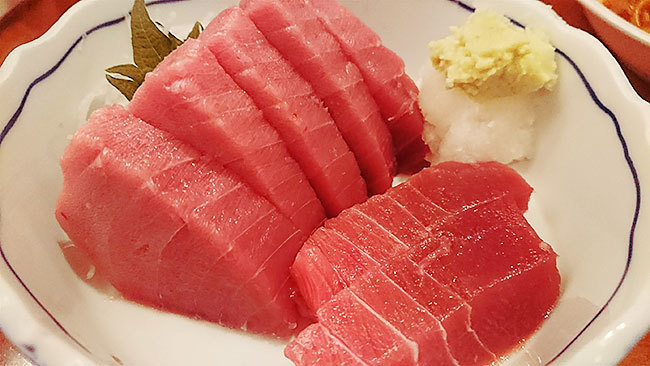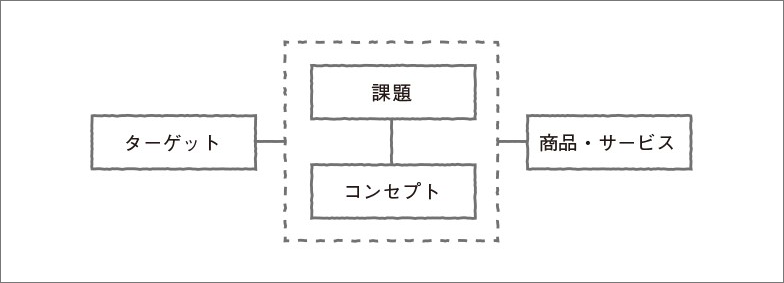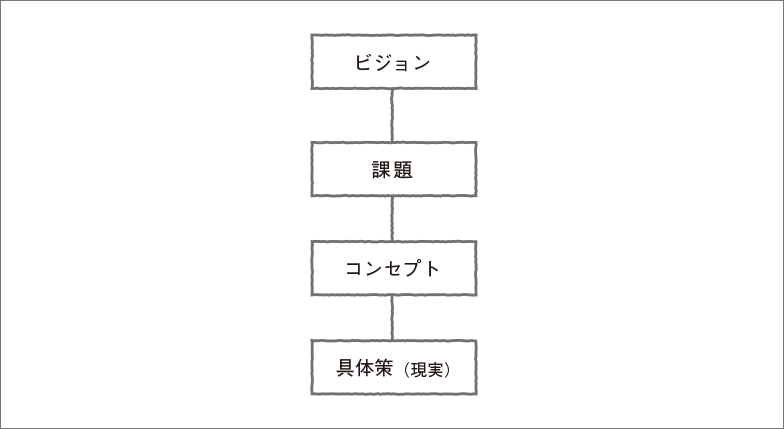People often ask me, "Are you from a rakugo club?" Apparently, my tone sounds like it. But it's a bit too lighthearted for business presentations, right? I need to work on that.
I do love rakugo and occasionally visit yose theaters. I laugh and cry at the vivid stories that unfold just by listening. Tokyo is truly blessed to have four regular venues where you can casually enjoy such supreme storytelling anytime.

Just the other day, I thoroughly enjoyed myself at the Asakusa Engei Hall, then had a beer while the sun was still high at a diner run by the family home of a senior from my high school, located nearby.
Ah, what bliss!
Now, as I've mentioned several times in this column, creating a "concept" that overturns conventional wisdom requires two interactions. One is the back-and-forth between the "target audience" and the "product/service." It's about finding new perspectives to solve the target audience's problems using the power of that product or service.
The other is the back-and-forth between an organization's or individual's "vision" and the "concrete measures" representing the reality at hand. A concept must function as a means toward achieving something, like a company's desired "vision," rather than being just a mere "idea."
The moment a concept emerges through these two interactions, it is ultimately organized as a whole within the "Cross Frame."
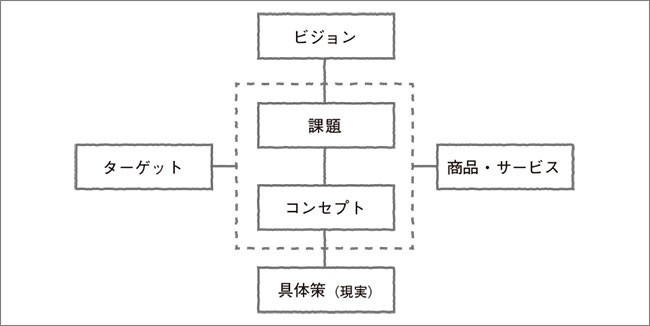
Cross Frame
We actually use this Cross Frame in product development, but when people try it themselves, they often get so caught up just filling each "box" that they can't see the bigger picture.
However, these boxes don't exist in isolation; they must be logically connected to each other. In other words, the completed cross-frame should naturally reveal a single coherent "story."
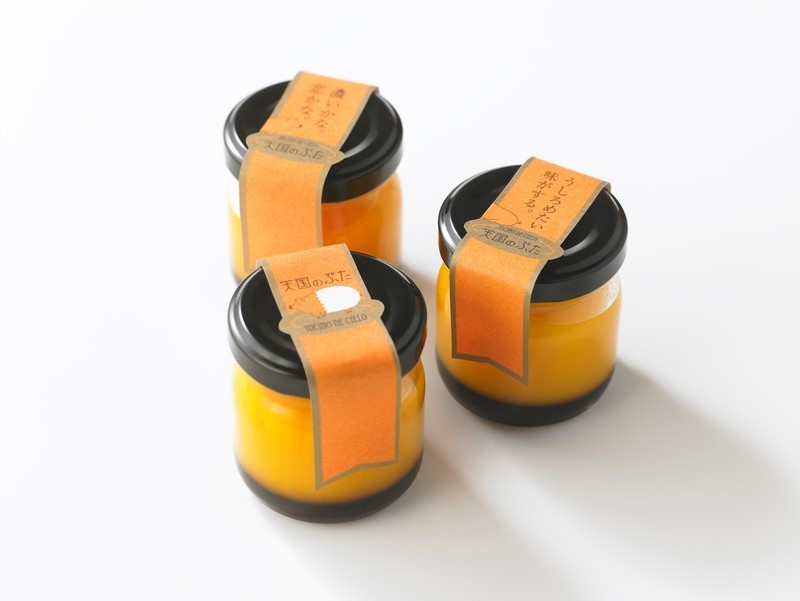
Heaven's Pig
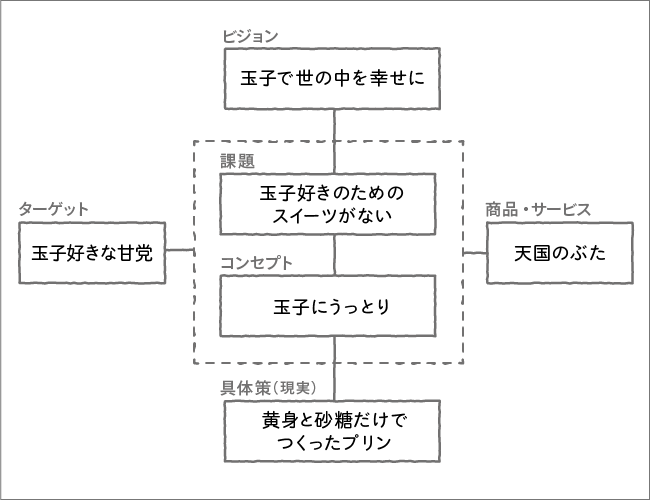
Heavenly Pig Cross Frame
The Heavenly Pig cross frame is as shown in the diagram above, and it is read like this.

The Story of the Cross Frame
Products that don't yet exist in the world are initially presented as a story like this. Management must review it and decide whether to adopt it.
At that point, questions like "How many sweet-toothed egg lovers exist in the world?" or "What kinds of sweets for egg lovers exist (or don't exist) in the world?" can be backed up with data.
On the other hand, directly asking consumers, "Would you like a dessert that makes you swoon over eggs?" is largely meaningless. Just as in an era before cars were common, you wouldn't get answers beyond "I want a faster horse," it's impossible to ask people to imagine and evaluate something that doesn't yet exist in the world, like a pudding made only from egg yolks and sugar.
This is where management becomes difficult. Relying solely on data-driven negative checks risks stifling promising opportunities before they can blossom.
The "Cross Frame" approach demands the capacity to evaluate the "+ (positive)" aspects of a concept.
That's all for now.
Please, help yourself!

